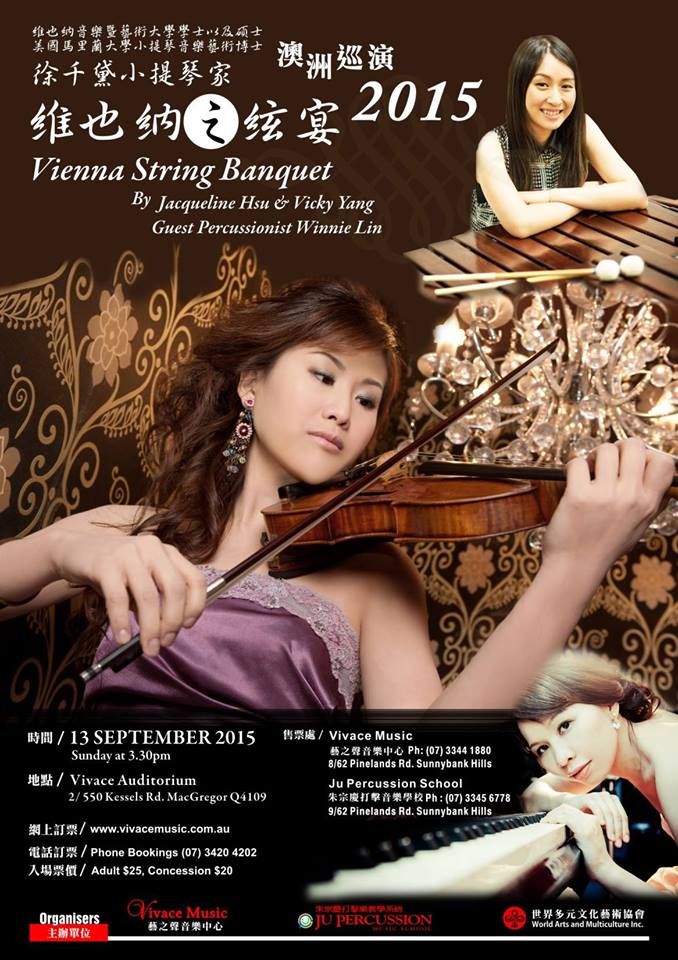
Dr. Robert McClure's composition for violin and percussion titled, "at water's edge" will have its world premiere given by Jacqueline Hsu and Winnie Liu in Brisbane, Australia on September 13, 2015.
"at water's edge" was written for Jacqueline Hsu. The piece is the product of several elements observed in Suzhou, China. On a particularly windy day, he was sitting next to Dushu Lake in the summer of 2014 and working on the pitch organization for this piece. The pitch material was created using “invented scales,” a concept he learned from composer, Joel Hoffman. Three invented scales are used structurally throughout the piece. As he was working, the dynamic envelope of wind struck him as it moved through the trees he was sitting beneath. He recorded the sound of the wind moving through trees and using a program he wrote in Max/MSP, he analyzed the amplitude content of the recordings. This data was realized graphically and is used as the dynamic envelope for the violin in many sections of the piece. As he listened to the recordings, they contained birdcalls of the local Suzhou birds. he transcribed these calls for their generic melodic contour. These calls became the melodic gestures that he mapped onto the invented scales. The formal design ultimately relates to John Cage's idea of form as being a series of empty containers, which can either be filled with sound or left empty with “silence.” Form and duration were a central concern in this piece as his thoughts on music have been changing recently. To determine the duration of the formal sections, he timed durations between motorbikes passing a light pole in front of our apartment building.
This piece is built from elements that occur in Suzhou. The durational rhythms of the city at rush hour. The dynamic envelope of wind through the trees next to Dushu Lake. The melodic material of birds local to Suzhou. After moving to China, many colleagues suggested making some musical connection with Chinese music or culture. He believe this piece makes that connection in a deeper manner than co-opting melodies or structures from a culture to which he is foreign. The sounds, rhythms, and scales of time that he hears in Suzhou form the backbone of this piece.
